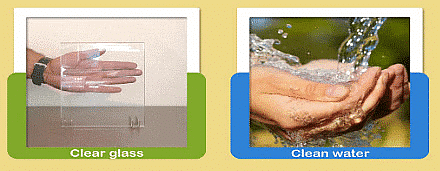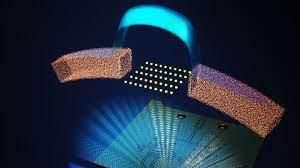Class 5 Science - Light and Shadow - CBSE Worksheets Solutions - 1
Q1: Multiple Choice Questions (MCQs).
(i) Which of the following is a natural source of light?
(a) Torch
(b) Candle
(c) Fireflies
(d) Electric bulb
Ans: (c)
Fireflies are a natural source of light because they produce their own light. A torch, candle, and electric bulb are artificial sources of light.
(ii) Which of these is not a transparent object?
(a) Glass
(b) Air
(c) Wood
(d) Water
Ans: (c)
Wood is an opaque object, which does not allow light to pass through it. Glass, air, and water are transparent objects, which allow light to pass through them.
(iii) What do we call the dark area formed by an opaque object when light falls on it?
(a) Reflection
(b) Shadow
(c) Refraction
(d) Lens
Ans: (b)
A shadow is a dark area formed by an opaque object when light falls on it. Reflection, refraction, and lens are not related to the formation of shadows.
(iv) What is the term used to describe how light travels in a straight line?
(a) Reflection of light
(b) Refraction of light
(c) Rectilinear propagation of light
(d) Dispersion of light
Ans: (c)
Rectilinear propagation of light means that light travels in straight lines. This property allows us to see objects clearly, as light moves directly from a source to our eyes without bending.
(v) Which of the following materials allows light to pass through it?
(a) Opaque
(b) Transparent
(c) Translucent
(d) Reflective
Ans: (b)
Transparent materials allow light to pass through them, while opaque materials do not allow light to pass through them, and translucent materials allow only some light to pass through them.

Q2: Fill in the blanks.
(i) Light travels in a straight line called a __________.
Ans: Light travels in a straight line called a ray.
(ii) When an object blocks light, it forms a __________.
Ans: When an object blocks light, it forms a shadow.
(iii) The size of the shadow depends on the __________ of the light source.
Ans: The size of the shadow depends on the angle of the light source.
(iv) Shadows are the longest during the __________.
Ans: Shadows are the longest during the morning and evening.
(v) Transparent materials allow __________ to pass through them.
Ans: Transparent materials allow light to pass through them.
Q3: Match the column.

Ans: (i) Transparent - (c) Allows light to pass through
(ii) Translucent - (d) Allows some light to pass through
(iii) Opaque - (a) Does not allow light to pass through
(iv) Reflection - (b) Changes the direction of light
(v) Refraction - (e) Bends light
Q4: True or False.
(i) Shadows are formed when light is blocked by an object.
Ans: True
When an object blocks the light from a light source, it creates a shadow.
(ii) The size of the shadow depends on the distance of the object from the light source.
Ans: True
As the distance between the object and the light source increases, the size of the shadow decreases.
(iii) Transparent materials do not allow light to pass through them.
Ans: False
Transparent materials allow light to pass through them without scattering it.
(iv) Mirrors are an example of a reflective surface.
Ans: True
Mirrors are made of a glass surface with a reflective coating that reflects light.
(v) Shadows can change shape and size throughout the day.
Ans: True
Shadows change shape and size as the angle of the light source changes, which happens throughout the day as the sun moves across the sky.
Q5: Short Answer Questions.
(i) What is light?
Ans: Light is a form of energy that allows us to see objects around us. It travels in a straight line and can be reflected or refracted.
(ii) Name any two sources of light.
Ans: Two sources of light are the sun (natural source) and a torch (artificial source).
(iii) What are the three types of materials based on their interaction with light?
Ans: The three types of materials based on their interaction with light are transparent, translucent, and opaque.
(iv) Explain the difference between transparent, translucent, and opaque objects.
Ans:
- Transparent objects allow light to pass through them, so we can see through them.
- Translucent objects allow some light to pass through them, but not enough to see through them.
- Opaque objects do not allow any light to pass through them, so we cannot see through them at all.
(v) How are shadows formed?
Ans: Shadows are formed when an opaque object blocks the path of light. The dark area behind the object, where the light is blocked, is called the shadow.
|
42 videos|230 docs|45 tests
|
FAQs on Class 5 Science - Light and Shadow - CBSE Worksheets Solutions - 1
| 1. What is light and how does it travel? |  |
| 2. What is a shadow and how is it formed? |  |
| 3. How does the position of the light source affect the size and shape of a shadow? |  |
| 4. Can shadows be colored? If so, how? |  |
| 5. What are some practical applications of shadows in daily life? |  |

















